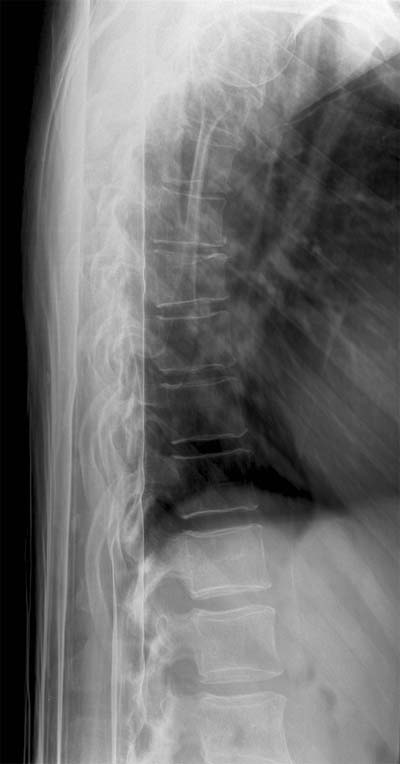.
This is a picture of my spine. It was taken on 21 Feb, after landing at great force on my upper back as I fell from a very wet children’s slide. I have a 10% compression fracture at T8. The fracture will heal after 6 weeks but will remain compressed. The important thing now is to continue moving, but gently, between resting, and to continue lengthening exercises.
I am lucky. This could be so much worse. I am taking drugs to relax the muscles and to relieve the pain. I can read in between sleeping.
There is something beautiful about this image. Is it because it is a picture of something that is actually happening? Is its accuracy what makes it so beautiful? Is it because it is a picture of something I know exists but cannot directly see?
Keats wrote, in Ode to a Grecian Urn, that beauty is truth, truth is beauty, and that is all we know on earth and all we need to know.
Today I am reading about structure in David Bohm’s book, On Creativity.
Bohm talks about the beauty and truth of structures made in art and science. They are beautiful, he suggests, because they reveal understandings of how the world works.
As a human structure made to move, I am learning what motion I am capable of at this point in my life. To me there is beauty in learning what is true.
Bohm suggests that art works and scientific theories are structures that come from ‘the human being as a whole’, and that it is limiting to view art and science as coming only from our ‘imagination’ or ‘reason’. (p. 68)
This makes me think about how I am making Antarctic animations. Is it a whole body process? I feel my way through understanding Antarctica by making animations in response to what I learn from experience and observations.
Animation is an art that structures forms in space and time. Antarctic animations reflect what I have learned about how Antarctica works. The 42 animations, when complete, will be arranged according to their use of time, space and effort. They may also be arranged according to their use of metaphor, language and landscape. They may be arranged in other ways that I cannot yet see.
New interface structures will need to be made to present these findings. I am hoping to come up with structures that reflect the Antarctic environment itself: layered and able to be understood from many different perspectives. I think of antarctica as a huge, multifocal lens that reflects the world views of people who have observed it, and responded to it. I am one of those many people.
I am a part of what I am studying: motion and change observed and experienced.
Antarctic animation contributes to understanding what Bohm and other people say, that the constant factor in our world is motion and change.
Finding ways to represent the reality of climate change is the challenge.
People are working on this problem individually and collectively. New world views are being structured as scientific theories and as art works.
New world views reconnect with ancient knowledge of our selves as part of nature, and reciprocity between living things.

